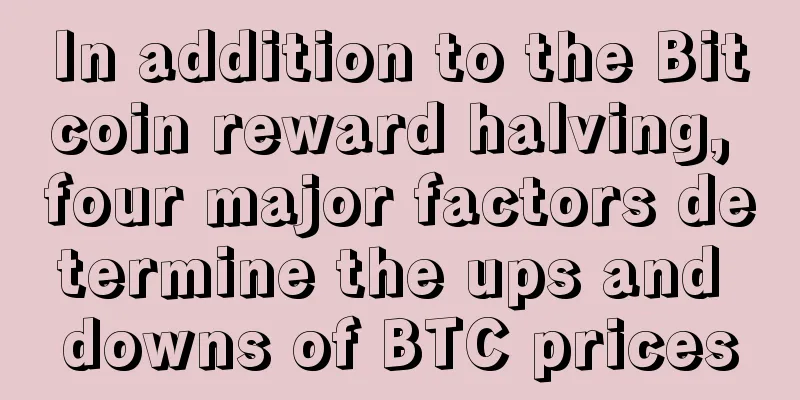In addition to the Bitcoin reward halving, four major factors determine the ups and downs of BTC prices

|
Compiled by | Neicanjun Bitcoin is back in the global spotlight and has seen some strong rallies in the altcoin space as the price of Bitcoin briefly surpassed the key $10,000 price level again. The leading crypto is currently trading around $9,550 and has gained 31.5% year to date, making it one of the best performing assets so far this year. While cryptocurrency bulls have been cheering the recent price gains, many may have been wondering what other factors, besides the upcoming reward halving event, have contributed to the recent surge. 01 Low volatility near all-time lows Despite the recent positive price action, we want to highlight the decline in BTC’s volatility. Cryptocurrency prices are generally more volatile than other assets such as stock indices and traditional commodities like energy and metals. Volatility measures the uncertainty of market prices. When volatility increases, traders may cut their cryptocurrency positions or postpone investment decisions. Figure 1 shows BTCUSD’s 3-month realized volatility, which has recently fallen further to near the all-time lows seen in mid-November 2018. Overall, low volatility is likely to encourage more HODL holders to remain in their positions; therefore, this is considered a positive factor for prices. Figure 1: BTCUSD volatility in the past three months (source Twitter) Figure 2: BTCUSD implied volatility in the past three months (Source: Skew) However, we also note that the implied volatility of BTCUSD has been hovering around recent lows, although it appears to have recovered a small amount. In the options market, implied volatility refers to the expected volatility of the underlying asset (in this case, Bitcoin) during the option's life. The supply and demand of options can directly affect implied volatility. When market expectations rise, demand for options will increase, and implied volatility will also increase. Conversely, when sentiment cools, expectations fall, and demand for options falls, implied volatility will also fall. In this context, the low implied volatility in the BTCUSD options market may be a sign to some extent that medium-term expectations for BTCUSD may not be as high as the current rally suggests. Changes in volatility may be something that Bitcoin observers will want to keep a close eye on. 02 Bitcoin searches surge globally Sociality has always been one of the key factors in cryptocurrency analysis. The social sentiment of China’s crypto community has long been considered a barometer of the broader crypto space. When it comes to price analysis, the views of Chinese cryptocurrency observers can provide meaningful insights. Baidu’s Chinese search index for the term “Bitcoin” has soared to a recent high of 40,000 before falling to nearly 25,000. Meanwhile, data from Google Trends shows a similar pattern, with searches for the term “Bitcoin” exceeding 100 after BTC once again rose to the $10,000 mark. However, a surge can have both positive and negative effects, and sometimes send a mixed signal to the market. Figure 3: Bitcoin price and Baidu search index (Source: Longhash) Figure 4: The term “Bitcoin” on Google Trends (Source: Google Trends) A study conducted by RoninAi research scientist Sergey Krutolevich showed that spikes in conversation volume often precede spikes in search volume by a full day, while new price spikes precede by one to three days. This suggests that in addition to the clear correlation between social sentiment and crypto market prices, crypto market prices actually directly influence crypto market prices.” However, if one has been in the market long enough, one might be familiar with the fact that when FOMO buyers flood into the market, it is often considered a sell signal for those who entered the market earlier. 03 Bitcoin market dominance declines As BTC rebounds, another interesting phenomenon is the decline in BTC's market dominance. The figure below compares BTC's market dominance over a one-year period. BTC's market dominance has been on a downward trend since 2020, and the recent decline has been even greater despite the price increase. In contrast, ETH's market dominance has been rising while BTC has been falling. Capital allocation may be one of the reasons behind this difference. As major altcoins plummeted to near multi-year lows in Q4’19, some funds may have left Bitcoin and entered the altcoin space at the beginning of this year. This may have attracted the attention of value-driven investors to engage in altcoin trading. Figure 5: BTC vs. ETH market dominance (Source: Tradingview) Figure 6: Total market capitalization of cryptocurrencies other than BTC (Source: Tradingview) Are we in the middle of a “peak season” or is the market looking forward to the upcoming season? These remain controversial questions. However, the fact is that the total market capitalization, excluding BTC, has been growing steadily since January. Altcoin watchers will not miss its development as it appears to be retesting the May-July top (Figure 6). 04 Virus and Quantitative Easing Expectations The outbreak remains the biggest uncertainty for the global economy. Its impact has spread to global markets and assets, and cryptocurrencies are no exception. Central banks in Asia have begun taking measures to stimulate economic growth hit by the virus. Just recently, the People's Bank of China released the first batch of special re-lending funds for national and regional banks, aimed at helping small and medium-sized enterprises in China. Although the impact of the virus on the U.S. economy remains limited at present, the Federal Reserve has put an aggressive quantitative easing plan on the table amid the economic downturn. Federal Reserve Chairman Jerome Powell recently testified before the Senate Banking Committee that the Fed has two tools to fight a recession: buying government bonds (known as QE), and clear communication to the market about interest rate policy, often viewed as ‘forward guidance.’” Powell added, “We will use those tools, and I am sure we will use them aggressively if necessary.” While we don’t expect the Fed to be the first to restart quantitative easing anytime soon, it’s easy to see easing rhetoric from global policymakers due to the economic recession caused by the pandemic. If this easing policy intensifies, it could lead to a renewed focus on Bitcoin as a store of value and a tool to combat stagnant growth, and could translate into increasing demand for crypto technology. in conclusion The recent Bitcoin (BTC) and altcoin rally has attracted a lot of attention. As we get closer to the Bitcoin reward halving event, the bullish sentiment is even more evident. In addition to the halving, cryptocurrency observers should not ignore the above four factors in their medium-term trend analysis to get a complete picture of market movements. Compiled by | Neicanjun Disclaimer: This information should not be used as a basis for making investment decisions, nor should it be interpreted as advice for engaging in investment transactions. Trading digital assets involves significant risks and may result in the loss of your investment capital. Therefore, you should ensure that you fully understand the risks involved and invest prudently. "Chain Insider" is only responsible for sharing information and does not constitute any investment advice. All user investment behaviors have nothing to do with this site. |
<<: Destruction and halving reveal the real logic behind the rise
Recommend
What does a mole on the inner corner of the right eye mean?
Moles are often seen in our daily life, as everyo...
What does a man with a pointed head, narrow forehead and a big face look like? Is it good for a man to have a pointed head, narrow forehead and a big face?
Men with pointed heads, narrow foreheads and weak...
See your future from your nose
The nose also plays a very important role in phys...
RHY platform buys cloud computing power at a low price, and a group of four people can get a full cash back
The price of bitcoins remains high, which is a bu...
How does Chapman To look like?
Friends who love watching Hong Kong comedies shou...
The third largest Bitcoin whale continued to increase its holdings by 2,822 Bitcoins in the past 7 days
The United States has launched a new round of san...
What is the fate of a woman with a large frame? Do women with large frames have the appearance of strong women?
In our traditional aesthetics, except for the Tan...
Face reading by facial features: What do the five facial features represent?
From the perspective of physiognomy, each organ o...
The U.S. Government Should Destroy Bitcoin and Similar Technologies
Abstract: Although the US's online and offlin...
Daji's nose bridge features
In physiognomy, different facial features represe...
LUNA plummeted 45%, is there no hope? Do Kwon is still lying now, he holds more than 42 million new LUNA and tries to manipulate governance! Developer: I expected a crash but he didn't listen!
On June 6, Terra researcher FatMan tweeted to cri...
How to tell from the face what kind of woman has a miserable life? What kind of woman has a miserable life?
Women with thin ears have a hard life You can tel...
What do the lines on the palms of your fingers represent?
Our ten fingers are connected to our hearts, so t...
What is a cross-chain bridge?
Cross-chain bridges allow for the transfer of cry...
Major banks in Hong Kong refuse to provide services to Bitcoin companies, and exchanges are forced to open accounts overseas
Hong Kong’s traditional banking sector is hinderi...









